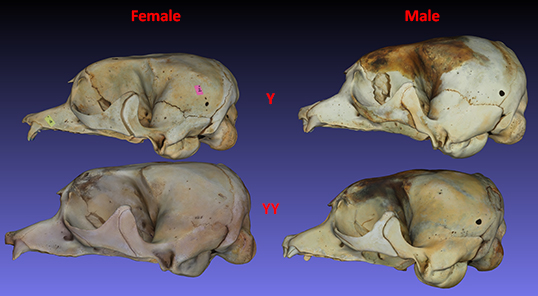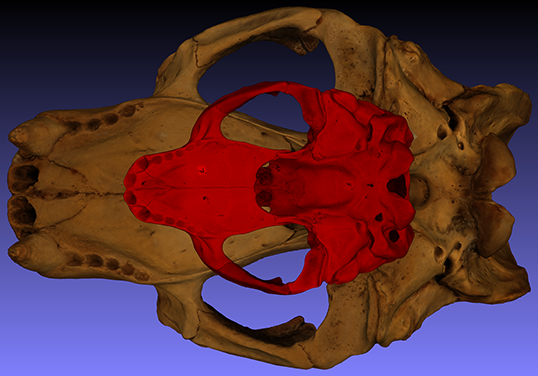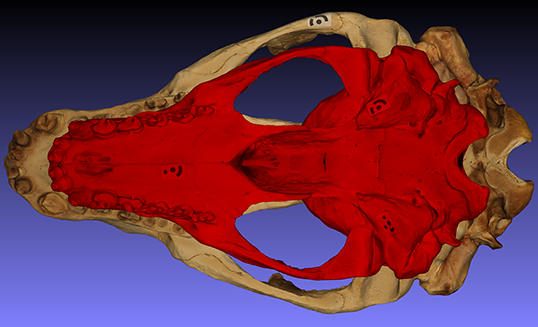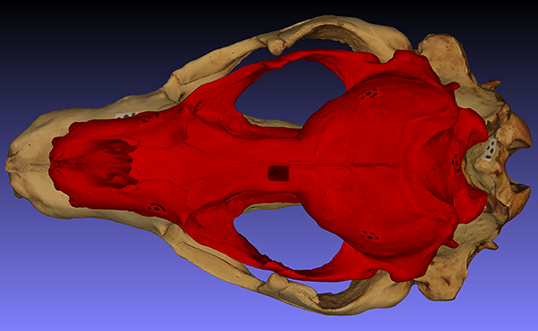Skull sexual dimorphism
One of the most striking aspects of the elephant skull development is the huge dimorphism between males and females. During the first two years of life the skull shape is very similar, and the skull is determined more by individual variation than by sex. In the following image The skull of the yearling (Y) male is bigger than the skull of the yearling female, but it is also bigger than the skull of the two year old (YY) male. Moreover, the YY female skull is bigger that the skull of the YY male. On the other hand, the shape of the skull is almost the same for Y and YY, males and females.

Skulls of yearling and two year old elephant seals found dead at Sea Lion Island
The male skull is not only bigger, but is also different in shape, and the difference increases with aging. You can see below some pictures of two skulls, belonging to an adult male and an adult female. To make the comparison easier, the female skull was coloured in red.


Male and female elephant seal skull, female in red
Skull sexual dimorphism is found in many seal species, but it is always less pronounced than in elephant. For example, skull dimorphism in leopard seal is much reduced compared to elephant seals, in both size and shape. See the following images and compare them with the elephant seal images above.


Male and female leopard seal skull, female in red
For more information please contact us by email at fil_esrg@eleseal.org. Thank you for your interest in our research projects !
